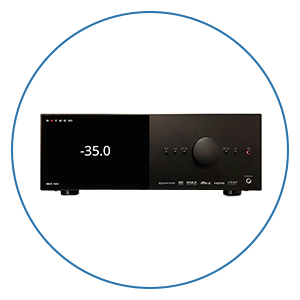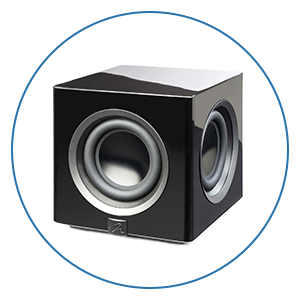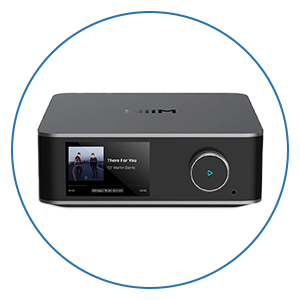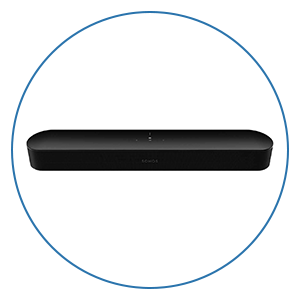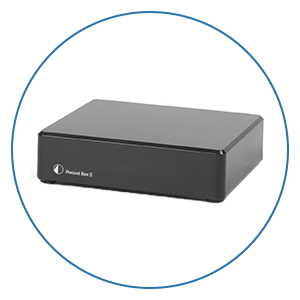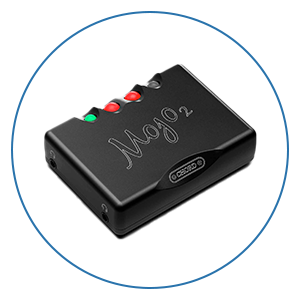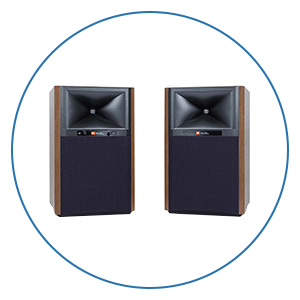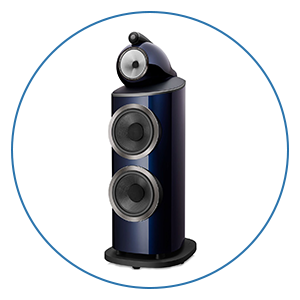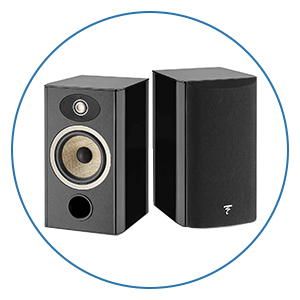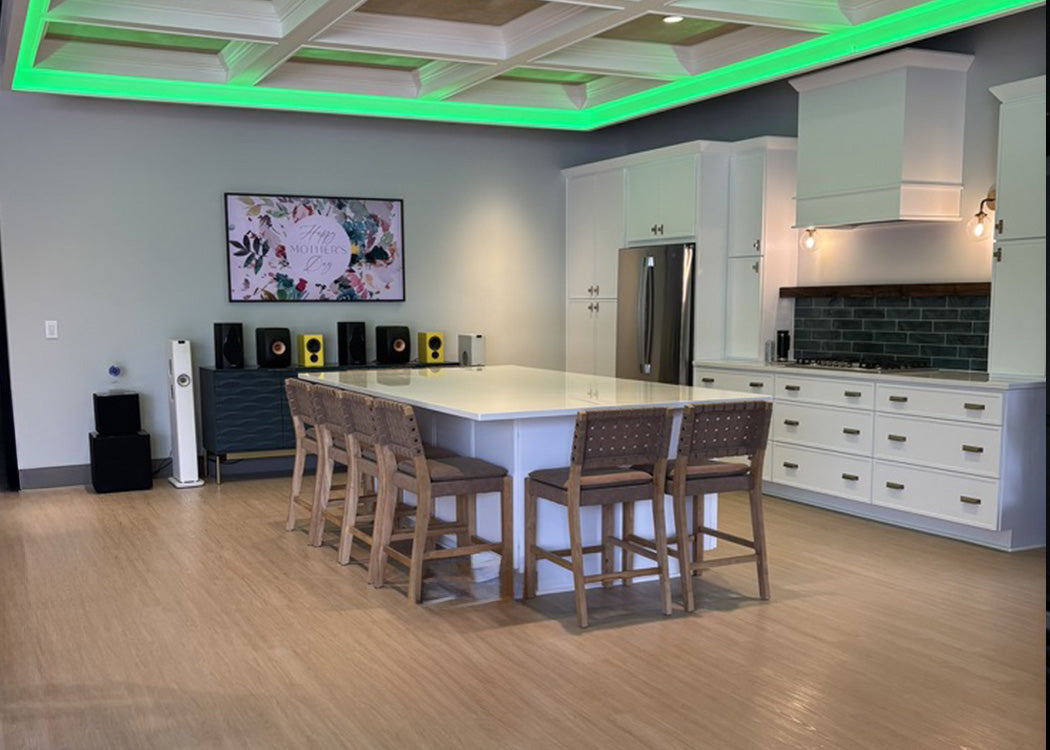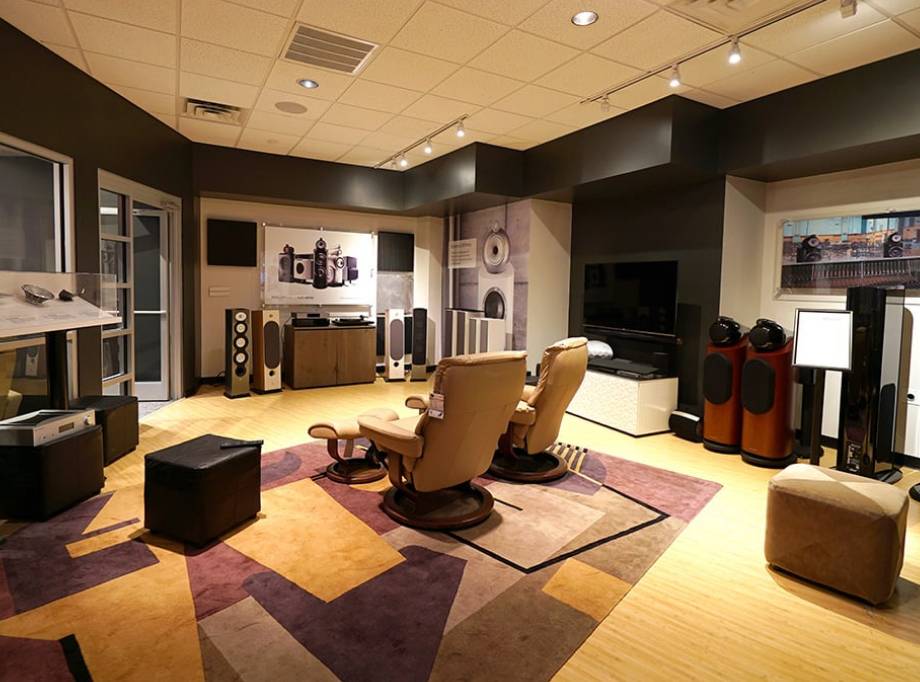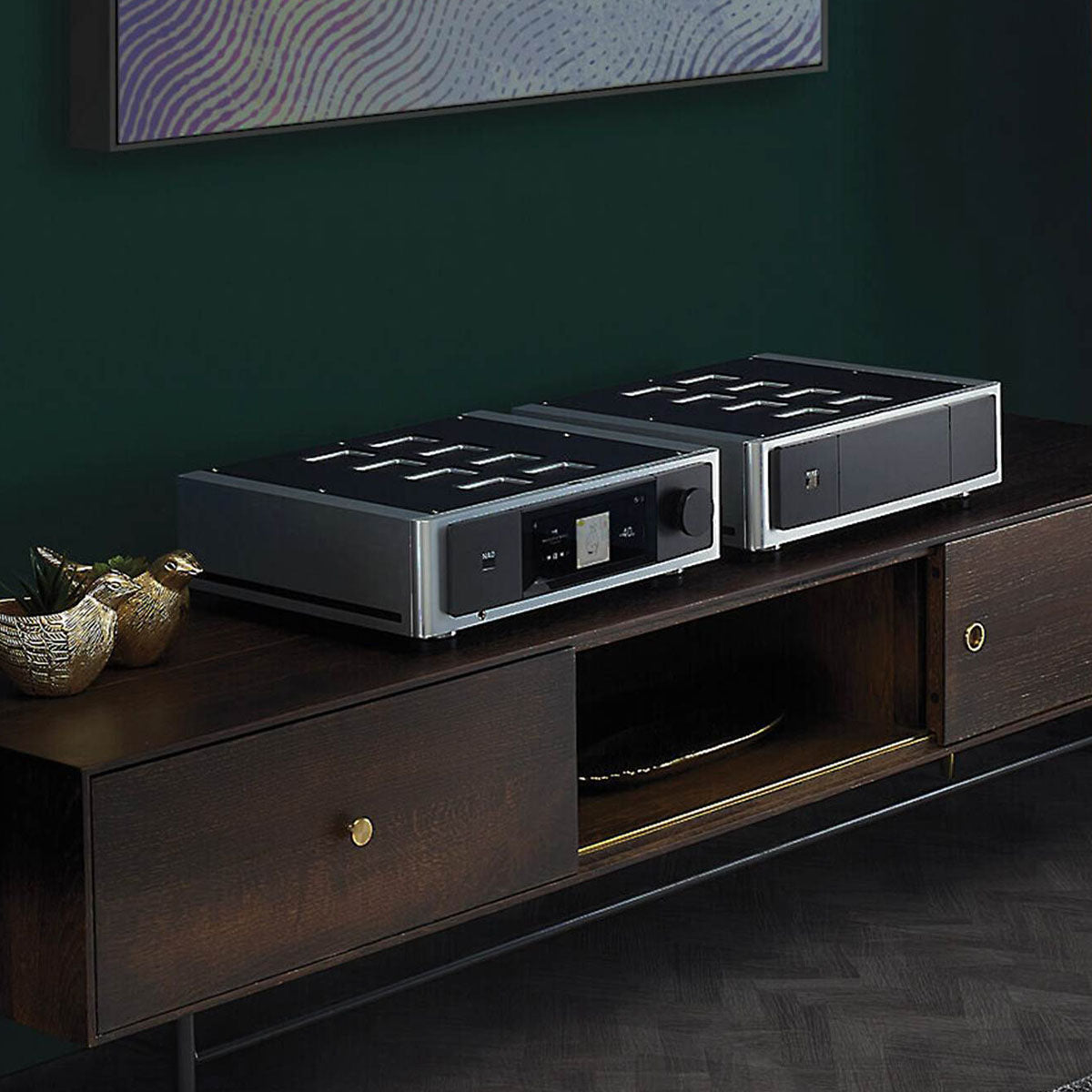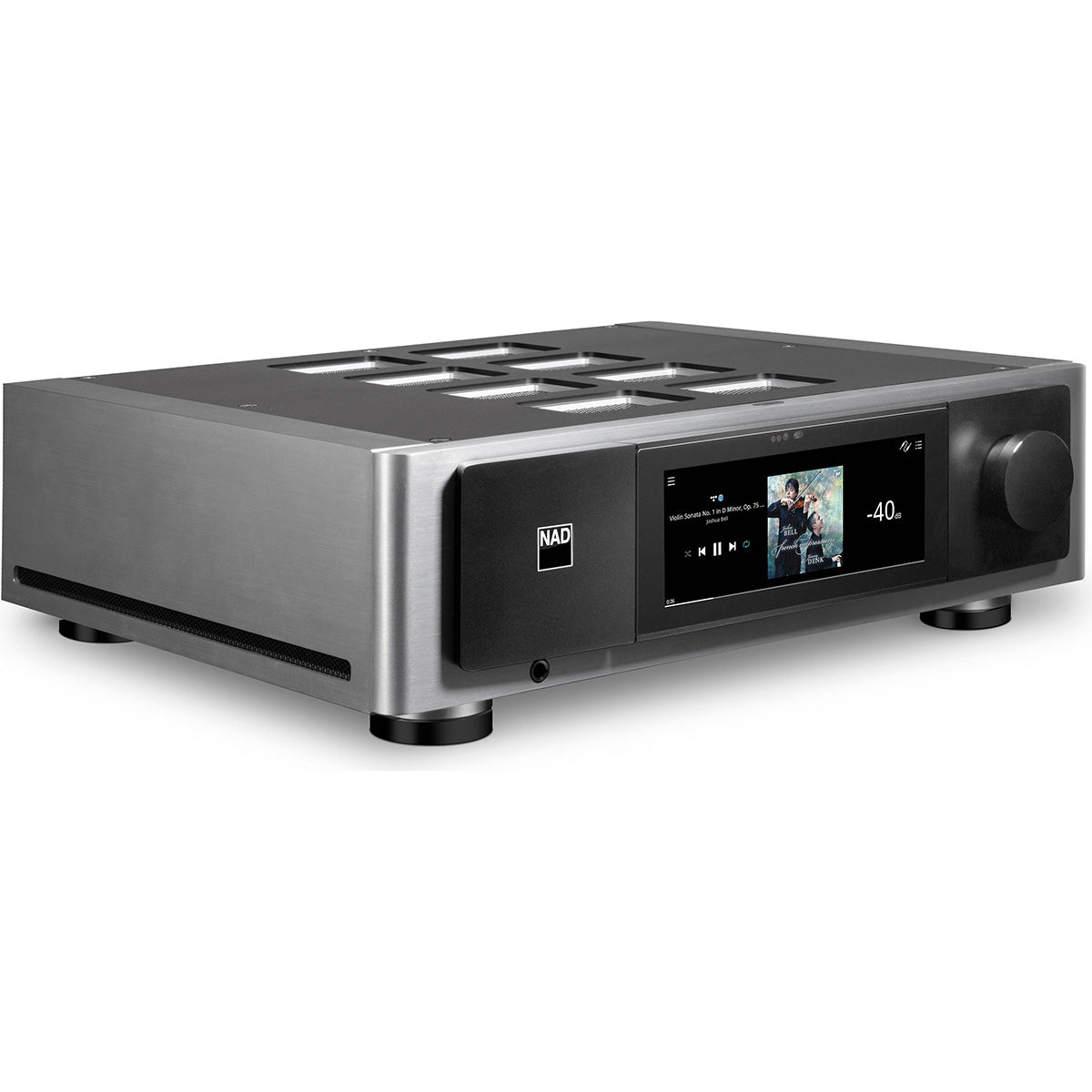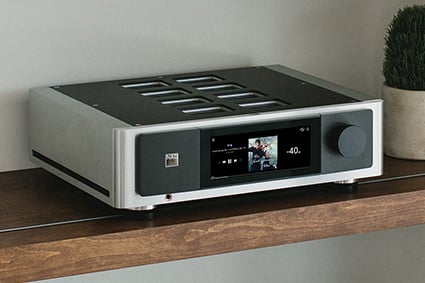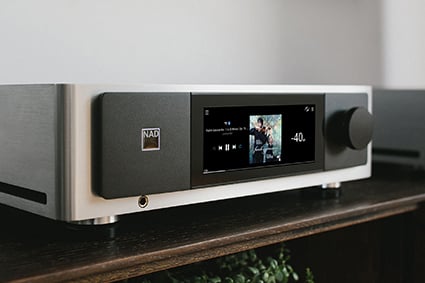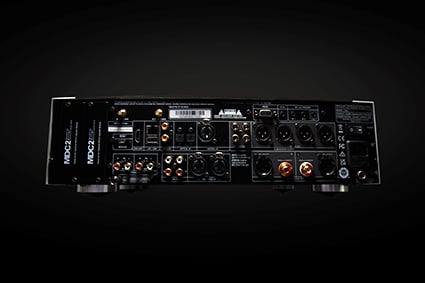NAD M66
Couldn't load pickup availability
Free Shipping On All Orders, No Minimums.
We offer free 2-day shipping on most products within the continental US.
Weekdays - Orders placed by 2pm EST ship same day. Orders placed after 2pm EST will ship the following business day.
Weekends - Orders placed on Saturday and Sunday will ship Monday.
Orders requiring motor freight delivery may take more than two business days. Once your order has shipped, you'll receive a shipping confirmation email with a tracking number for easy tracking.
Orders that contain items that are currently backordered, special order, or out of stock will ship complete once all items are in-stock unless otherwise requested.
If you need it faster, you will have the option of choosing a quicker shipping option when you checkout on the website.
At this time, we do not ship internationally and orders to Hawaii and Alaska may incur an additional shipping charge. Please contact us at 888.899.8776 or email support@audioadvice.com to confirm.
Rerouting and Address Changes
We cannot make ANY address changes once an order is placed. If you are unable to accept delivery of your package as ordered, we will need to cancel your order, return the package to sender and have you replace your order through our website.
Keep the Box
We suggest you keep the shipping box or boxes for at least 30 days. It is actually a great idea to keep boxes for audio products for the life of the product. Having the box and all packing will increase the trade-in value should you decide to move up and they are handy to have should you ever need to send the unit in for repair.
How To Receive a Motor Freight Order
The trucking company will contact you to schedule a convenient time to deliver the order. Please note that you must be present for delivery.
Visually inspect the box to make sure you see no signs of damage. If you notice any damage at all, take some pictures with your phone and make a note of them on the delivery receipt the driver will ask you to sign. If it is obvious that the product is damaged, please refuse the order and contact us immediately at 888.899.8776 or email support@audioadvice.com.
Open your box as soon as possible and inspect the product for damage and contact us if you find anything wrong.
FedEx Freight Service Comparison
| Feature / Service | Scheduled Curbside Delivery | White Glove Delivery |
|---|---|---|
| Scheduled delivery appointment | ✔ | ✔ |
| Delivery location | Ground level only (garage, front door, loading dock) | Room of choice, any floor |
| Delivery team | 1 person | 2 people |
| Placement inside home/business | ✘ | ✔ |
| Upstairs / downstairs delivery | ✘ | ✔ |
| Unpacking | ✘ | ✔ (upon request) |
| Packaging removal | ✘ | ✔ (upon request) |
| Assembly / installation | ✘ | ✘ |
| Old item removal | ✘ | ✘ |
At Audio Advice, we pride ourselves on customer satisfaction. We'll bend over backward to make sure you're 100% satisfied and we won't accept anything less. We offer 30-day hassle-free returns and personalized service from real, live people.
If an item doesn't meet your expectations, you may return or exchange it in its original condition and packaging within 30 days for a full refund, minus shipping fees. Items shipped back in like new condition through standard shipping carriers will only incur a flat fee of $15 to return. If the items were initially shipped through free scheduled delivery via motor freight (commonly referred to as LTL), returning them will result in return shipping fees starting at $150. These items include but are not limited to, oversized items such as TVs, certain subwoofers, floorstanding speakers, furniture, and most items weighing over 75 pounds. Return fees will also apply for exchanges. We want to treat your system as if it is our own and want you to be completely satisfied with your purchase.
Please see the instructions below. We only accept returns for any product purchased directly from our website. If merchandise is not returned in its original condition or is missing packaging, manuals, accessories or other parts, or the resale value of the product has been impaired, a partial refund will be given and calculated on a case-by-case basis.
Non-Returnable Items
The following items cannot be returned or cancelled:
- Special/Custom Order Items
- Open Box Products
- Gift Cards
- In-ear headphones cannot be returned once the packaging has been opened due to personal hygiene reasons. Please contact our customer care team if you'd like help choosing.
-
Turntables With a Broken Stylus: All turntables ship out with the stylus intact. If you return a turntable or phono cartridge with a broken or missing stylus you will be subject to a return fee. Please be careful when setting up your turntable and contact us with any questions.
Is It Easy To Return An Item?
Yes, simply give us a call at 888.899.8776 or you can email our support team at support@audioadvice.com. Many times our team of experts can help figure out why the product might not be working like you expected and get things fixed over the phone, so don’t be surprised if we ask a few questions, we love troubleshooting!
If our tech help can not make you happy, we will email over a return shipping label with a Return Number.
Hopefully, you saved all of the original item’s box and packaging inserts. You will want to pack back up your return or exchange in the same way it came out of the original box. Once you have everything packaged correctly, tape the box on the top and bottom to assure it stays together. If Audio Advice shipped the item to you inside a second box, it's a good idea to use that same extra box to help prevent damage on its way back to us. To avoid it accidentally coming back to you, use a magic marker to cross out the old shipping label or just tear it off.
The return shipping label we send you will have our address on it, just make sure you take the box to the right shipper (UPS, FEDEX, or USPS) as per the label.
If you are close to one of our stores, please let us know if it is more convenient for you to return it to us directly. You will still need to get a return number by contacting us and shipping and/or restocking charges may apply.
When Will I See My Refund?
It usually takes around 7-14 days for the refund to show up on the payment method you used. We do inspect all returns for damage and accuracy of the item inside the box before issuing a refund. Some items may be subject to shipping and restocking fees.
Can I Exchange My Purchase For Something Different?
Sometimes those big speakers just don’t fit in the room or you might have bought a small subwoofer and later found out you’d love a bigger one. If you would like to make an exchange within 30 days of receiving your item, just give us a call at 888.899.8776 or email support@audioadvice.com and we will help work out the details. Additional shipping charges and return costs may apply.
How Do I Cancel An Order?
If the item has already shipped out or is a special order item, it is not possible to cancel the order. Please contact us at 888.899.8776 or email support@audioadvice.com to start the return process.
What If I Find Shipping Damage?
We need to know right away about any shipping damage. Please contact us at 888.899.8776 or email support@audioadvice.com within 48 hours of your delivery so we can get the ball rolling on making things right. It’s very helpful to take some pictures and email them to us if possible.
Can I Refuse A Shipment?
You can, but unless the item is damaged, shipping and restocking fees will be deducted from your refund. If your item arrives damaged and you are lucky enough to be there, snap some quick pics and refuse the order. Then contact us so we can get a replacement on the way.
What Happens If My Order Is Defective?
This is actually pretty rare, most consumer electronics work fine out of the box 99.9% of the time. We’d like for you to contact us first by calling 888.899.8776 or email support@audioadvice.com so we can help get to the bottom of things. If your item is indeed defective during the first 30 days, we can usually exchange it for a new, replacement unit.
What About Service After 30 Days?
Audio Advice has a great relationship with all of our brands and can help you with warranty service by the brand after our 30-day guarantee period. Even after the warranty expires, we can arrange for service by the brand on products purchased from Audio Advice. Just call 888.899.8776 or email support@audioadvice.com.
How Do You Determine A Restocking Fee?
You may not believe it, but sometimes we receive items back that were put in the box with zero packaging and are completely destroyed or are missing many of the pieces that came with the item. We also track serial numbers and will get back different serial numbers. We’ve even seen different items than what we shipped out be returned. However, it’s very important to package your return properly so that nothing goes missing or gets damaged in shipping, which will result in a restocking fee or even no refund at all. If a product is opened and the market value of the product is reduced, then a restocking fee may be applied to the cost of restocking and the reduced market value of the product. The bottom line is if you treat us fairly, we will do the same.
Audio Advice strives to provide industry-leading support and service while also maintaining the lowest prices available on products for our customers. We work hard with our vendors to bring our customers the best products at each price point. As a part of that process, we work with our vendors to provide the lowest pricing in our stores and on our website.
Our prices should always be the same as any other authorized dealer, including big-box retailers and major online retailers.
If you believe that you have found a lower advertised price from a legitimate authorized seller, call us and let us know so we can make sure we can correct any inadvertent error on our side. As a matter of policy, we update our prices automatically if a vendor changes its authorized pricing policies, so we generally have the best prices all the time. Increasingly, there are knock-off copies of products online, usually sold by non-authorized dealers.
Please be sure that the item meets the following conditions:
- The item is brand new, in stock, and available for purchase
- The item has the identical model number, color, etc as the item on our site.
- The seller is an authorized dealer
As always, our goal is to provide a terrific customer experience, including industry low prices. We appreciate your support.
Overview
The High Notes

Dirac Live

Top of the Line DACs

Elegant & Beautiful
High-Performance, Unbeatable Value
NAD made a big splash in the audio world in the late 70s with the introduction of the 3020 integrated amplifier, which trounced a lot of far more expensive gear in terms of audio performance. Since then, NAD has always been about making some of the best value products available. Their Bluesound series of streaming products is the choice of music lovers all over the world for a high-performance music streaming experience that sounds far better than you would expect for its price. Many NAD owners were so happy with the gear but wanted something even better, which led them to develop their Master Series. This series is their no-holds-barred assault on state-of-the-art sound, and even though it's more expensive than their main line gear, it still sells for far less than most of the competition from a performance and feature standpoint.

With the ease of access to millions of songs at your fingertips, music streaming has become incredibly popular. Many enthusiasts have added streamers to their systems. However, suppose you want a completely seamless experience where you can choose your music, change your volume, and control everything from your phone or prep-amp without needing multiple apps or even a remote control. In that case, a streamer/preamp combo is for you. All you need to add is a power amp and speakers. The NAD M66 sets a new standard for performance and features in this category.
Design & Build Quality
We were fortunate enough to coordinate with NAD and Dirac on the M66 before its final release, giving them our input on the software as they continually improved it. We are happy to say that we are thrilled with the final product. NAD’s Master Series is all about outstanding performance and build quality, and we have to tell you, that the M66 has those two facets completely covered. The brushed aluminum front panel, rounded edges, and beautiful 7” touchscreen give you class and high performance. It perfectly matches their other Master Series products, including the NAD M23 power amplifier, which many will likely pair with the M66. It is one gorgeous piece of gear and is solid as rock!

Features & Technology
When you look at the rear panel of the M66, you’ll see far more connections than you would typically see on a preamp/streamer combination. The usual suspects are there with two coax and two toslink digital inputs, but you also get an AES balanced digital input. In addition, you’ll find two analog inputs, a moving coil, and a moving magnet phono input. It is also very nice to see an HDMI ARC input for connecting your M66 to a TV for much better audio. There is also a USB input for external drives.
The RCA output connectors are high-end and chassis mounted, plus you get a pair of XLR outputs as well. It's pretty clear the M66 has just about any possible type of connection covered, but the two MDC2 slots on the rear are NAD’s very cool way of future-proofing things. NAD has been doing MDC on many units for years and has kept its promise of allowing you to keep your main piece of hardware and simply change out a card should technology drastically change. We all know in the consumer electronics business, that event is not a matter of “if” but when. It's nice to know you will be covered should some new capability come along.
The last 8 connectors you will encounter on the back of the M66 are what put it head and shoulders above anything we have seen in a two-channel piece. In what is sure to make lovers of subwoofers smile from ear to ear, there are 4 RCA and 4 XLR subwoofer outputs. Yes, the M66 supports up to 4 independent subwoofers! More about this in a minute.

The heart of the M66 is NAD’s highly regarded BluOS streaming system. We remember when NAD first brought this to the market years and years ago. Initially, it was a little awkward to use but turned out to be a favorite of music lovers as their Bluesound gear offers far better sound quality than it should for its modest price. Since then, the BluOS ecosystem and corresponding app have brought the interface up to match the sound quality. This same tech is built into the M66, which means that should you add Bluesound speakers or other streamers around the house, they can all talk to each other, and you can have independent or grouped volume control. BluOS supports over 20 of the very best streaming services, most of which offer better than CD quality streaming with millions of songs at your fingertips. You’ll find Tidal, Qobuz, Deezer, and many more. And when your friends come over with a playlist, the M66 also supports Bluetooth, even aptX HD, and Apple Airplay2.
The M66 has a relatively simple remote that allows you to control inputs, volume, mute, and other essential functions. However, the vast majority of people will never need to use the remote and will instead control the M66 from the BlueOS app on their computer, phone, or iPad. In other words, unlike other network streamers that you connect to your stereo system, which require you to use a separate remote control or app to change inputs and volume, with the M66, it’s all integrated seamlessly into the BluOS app. We have tried pretty much everything in our listening rooms, and we can tell you that this makes the experience way better than fumbling through a streaming app and then picking up a remote to adjust the volume and back again.
We also utilized Roon for our testing, allowing you to select your music and change volume from the same interface. The M66 was going through the final Roon certification while we were testing, but we expect it to be complete by the time 99% of you receive your units.
The M66, however, is not just a Bluesound piece on steroids. It uses what we consider the best digital-to-analog converter currently available. Yes, you get the flagship ESS Sabre ES9038PRO DAC and ES9822PRO Analog to Digital Converter. These are about the most expensive available and cost 5-10 times as much as what you’ll see in most of the other streamer/preamps on the market. While this is an excellent-sounding DAC, NAD also implemented high-performance support circuitry, which impacts the sound. This is evident by how much heavier this unit is than its competitors. It includes a very large power supply designed to allow the great DAC to extract the most subtle musical details from your digital sources.
For the M66, NAD developed a new circuit called Dynamic Digital Headroom. In researching how digital signals behave with explosive transients, they observed that you could get some clipping with sudden high-frequency attacks. Think of a quick cymbal crash. This circuit reduces this clipping, with the result being some of the most effortless cymbals you will ever hear and slight improvements in the dynamics of things like percussive rim shots. We tested it on and off and covered it in more detail in the M66 setup video sent to Audio Advice M66 customers.
NAD takes the volume control of the M66 to a level we usually find only in very high-end preamps. They use precision ladder resistors to improve dynamic range and give you perfect channel matching even at minuscule volume levels.
For those of you wanting to have a great two-channel system and home theater rig in the same room, you’ll be happy to know the M66 will have a two-channel bypass to incorporate into your home theater. This feature had not yet been implemented when we did our testing, so if this is important to you, talk to our team to find out if it has been released.

Dirac Live Room Correction
At Audio Advice, we are huge believers in room correction. Dirac has been around for many years and has pretty much become the gold standard for home theater room correction. It plays frequency sweeps from each of your speakers and implements a set of corrections to adjust for things like frequency peaks and valleys caused by your room. Recently, Dirac has gotten really, really good at room correction, particularly improving the bass response in a room. The M66 is the first stereo pre-amp in the world that includes full Dirac Live Bass Control. None of the cheaper streamer/preamp solutions have anything close to the power of Dirac. We tested the M66 in a theater and a listening room with multiple speaker brands, and it shined across the board. In a home office, which is also one of our listening rooms, we tested it with Martin Logan Masterpiece Expression 13As and the matching NAD M23 Power Amplifier. The Martin Logan 13As are large electrostats with dual 10” woofers built into each speaker. So they can play down in the low 20hz range. In this room, there has always been a bass peak around 70hz. When we tested other streamer preamps, it always showed the negative room impacts on the music. Once we ran Dirac on the M66 and made my adjustments, the sound stage improved dramatically, along with tighter and cleaner bass without the boominess around 70hz. Usually, the intricacies of the shape of this room cause vocals to appear just slightly left of center. The Dirac calibration seamlessly brought vocals back to the perfect center. If you are really into hearing how the music was intended, having room correction built into the M66 will make it the easy winner versus the competition.
As if having Dirac on board were not enough, if you are ever thinking about taking your stereo system up a level with additional subs, the M66 beats everything on the market right now from a combined streamer/preamp level because it has both Dirac Bass Control and four independent sub outputs. For fun, we added two REL Carbon Special subs next to our tower speakers. We then ran a handful of tests to see how the M66 performed. We tested using several great bass-heavy tracks, including “Make Us Stronger” by Ghost Rider and “No Sanctuary” by Chris Jones, a track you’ll have to try if you like bass. We’ll jump straight to the conclusion, which is that this system totally rocked beyond anything we’ve had in this listening room.
We want to mention that everything you need to set up and use the M66 is right in the BluOS app. Once you put the M66 on your network, you can choose it and then set up the number of subs, crossover, and whether you want to run dynamic digital headroom.
One point we make in our setup guides for our customers is that the first thing you should do when you set up the M66 or any streamer/preamp is set a reduced max volume so you don’t accidentally damage your amplifier or speakers. We cover this and a handful of crucial tips and tricks in our Audio Advice M66 setup video.

Subwoofer Testing
Let’s shift our focus back to our subwoofer test. The next thing we did was run Dirac Bass Control. This adds advanced bass management capability, including phase alignment between the subs and your main speakers, and creates a smooth bass response across the combined output. With Bass Control, Dirac sets the crossover based on its algorithms but sets the floor currently at 70hz. Since many two-channel users will have full-range tower speakers, we talked to the team at Dirac and suggested that they allow the floor to go lower or, better yet, allow removal of the crossover so that Dirac can use the best bass from your sub and tower speakers in tandem. After a great discussion on this with the team at Dirac, we are pretty sure we will see this update in a future software release.
We tested many room curves in the M66 until we found one we loved across different setups. We send a copy of this Audio Advice room curve along with the M66 setup guide and the Audio Advice Dirac setup video to all purchasers, so we won’t go into that detail now. We’ve always thought we did not need additional subs in our room, but once we experienced everything time and phase aligned and the extra depth, it really sold us. The bad news is that we are now addicted to the sound and will be adding two new subs to this room.
When you run Dirac, you’ll want to follow our Dirac setup guide, where we go through the exact steps for setting up Dirac and avoiding the most common errors, plus a few pro tips for those of you who want to totally geek out. If you run Dirac Bass Control, there are some more advanced capabilities, like testing different crossover points that we cover in the Dirac setup video.
One point to note is that most people who run Dirac for the first time feel it gives them too little bass. What is happening 95% of the time is that you likely have a bass peak in your room at some frequency–in our case, around 75hz. That frequency is booming in your room and covering up all of the other great sound, but it feels powerful as that one frequency peak resonates in your room. When the equalization software removes that peak and others, the boominess you are used to is gone, and you will perceive less bass. Usually, at the same volume setting, you will have less SPL because the peaks have been flattened out. So typically, after running Dirac, you will likely use a little higher volume level setting to achieve the same total loudness or SPL, and you will quickly get used to the tighter and punchier bass. I generally recommend leaving it that way for a few days.
There is another cool advantage to the built-in Dirac solution in the M66. It allows you to implement up to 5 different Dirac filters into the M66 and choose whichever you want. Now, why would you want to do that? Our test room is a perfect example. We have a seat behind a desk where we listen to music. Then we have a separate seat farther forward, which is the ideal listening position for when you are not working at the desk. As you might imagine, the frequency peaks and valleys are different in these two positions. We also have electronic blinds that I can open to see outside or close when we are listening more critically. So, we have set five different filters: two for the work chair and three for the listening chair. One of each was taken when we had my electronic blinds open and one when they were closed, as this adjusts for the reflections off the windows instead of the diffusion from the blinds. One button press in the BluOS app, and it will change to the appropriate filter for my situation.
Another pretty unique feature of the M66 is the inclusion of a phono preamp that has both moving coil and moving magnet inputs. We do need to point out that the loading and gain for the moving coil section is fixed with the load set at 100 ohms, so some people with a moving coil will likely opt for a separate phono preamp you could plug into the analog inputs. NAD has you vinyl lovers covered, so you can either run all Analog Direct, bypassing all of the digital processing or let your vinyl or other analog sources convert to digital to utilize the Dirac calibration. It’s great to see NAD was looking out for you, as the chips that convert your analog signal to digital are also top-of-the-line ESS ADC chips.
So what did we not like? For how gorgeous this piece is, the large antennas on the back don’t look great to us, so we turned them to the side, which will work for most cases where you are not far away. Second, on the touchscreen, as you scroll across inputs, you must be deliberate to swipe below the input so you don’t accidentally change to that input. Honestly, there is not much more to complain about!

Overall Thoughts
We could go on talking about how great the M66 is, but let us summarize. The M66 combines full streaming capability from every major service, is Roon Ready, has both moving magnet and moving coil turntable inputs, and has every other digital and analog input you could want. Plus, it breaks ground as the first stereo component with four independent subwoofer outs with built-in Dirac Bass Control, which by itself is a $750 piece of software included. Very few rooms are approaching acoustically perfect, but with Dirac Bass Control, you can work what seems like magic in almost any room setting. It also has a great headphone output that automatically turns off the feed to your external amplifier so you can switch to headphones at night or for any other reason. We can best summarize by telling you that our CEO’s prior DAC and preamp are moving out of his own personal system, and the M66 is moving in. That should tell you all that you need to know if this is within your budget range.
We’re here to help!
If you have further questions, contact our experts via chat, phone, or email. Or simply visit one of our world-class showrooms to experience speakers, projectors, TVs, and everything in between for yourself before you make a purchase!
If you’re planning your home theater or media room, check out our Home Theater Design page, where we have everything Home Theater related, including our FREE Home Theater Design Tool.
When you buy from Audio Advice, you’re buying from a trusted seller since 1978. We offer Free Shipping, Lifetime Expert Support, and our Price Guarantee. We look forward to serving you!
Details & Specs
With versatile inputs and outputs, the M66 can be the nerve center of a magnificent hi-fi system. There are balanced XLR and single-ended RCA outputs to make the connection to your favorite power amp — the M23 power amplifier would be a perfect match.
There are also balanced XLR and unbalanced RCA inputs for connecting sources, plus separate phono inputs for both moving magnet and moving coil cartridges. Coaxial and optical digital inputs let you connect compatible digital sources. An AES/EBU XLR digital input lets you add a high-performance CD or network transport. And it also has an HDMI eARC port for connecting a TV, so your system can pull double duty for music and movies.
When you connect the M66 to your Wi-Fi network, you'll get powerful system control and high-res streaming capability via the free BluOS Controller app. It also offers multi-room syncing with other BluOS speakers and components. I have three BluOS players in my home and love how it gives me easy access to my streaming sources and digital library. I also love its stable settings and great sound.
BluOS provides support for Spotify Connect, TIDAL Connect, and many more popular streaming services (may require subscription). Apple® AirPlay® 2 lets you stream directly from an iPhone® or iPad®. It also works with Roon (subscription required).
The M66 includes Dirac Live — one of the industry's best room-correction platforms. This software-based system uses the included calibration microphone to take precise acoustic measurements of your room. Then it creates a customized correction curve that fine-tunes the output of your speakers and subwoofers. You get balanced, clear sound that's uniquely tailored to your space.
The M66 offers an impressive — and unprecedented — four balanced and four unbalanced subwoofer outputs. It also has Dirac Live Bass Control calibration that helps you dial in the smooth, evenly balanced bass response from your connected subwoofers.
The M66's high-performance ESS Sabre DAC (digital-to-analog converter) chip provides a wide dynamic range with ultra-low noise and distortion and minimal timing errors (jitter) that can smear musical detail.
And the M66 is the first NAD component with Dynamic Digital Headroom (DDH) circuitry, which you can activate in the BluOS app. DDH gets rid of digital inter-sample peak-clipping distortion that can mar sudden high-frequency transients — like cymbal crashes and snare rim-shots — during the digital-to-analog conversion process.
The ultra-precise, resistor-ladder volume control circuit reduces distortion, maximizes dynamic range, and helps keep left- and right-channel output accurately balanced across the entire volume range. And a selectable Analogue Direct mode lets you bypass all digital processing to prevent digital interference. You can even disable the M66's Wi-Fi and Bluetooth circuits in the BluOS app to prevent RF interference and get the clearest possible analog sound.
- high-performance stereo preamplifier for digital and analog sources
- 32-bit/384kHz ES9038Pro SABRE DAC
- supports high-res MQA, FLAC, WAV, and AIFF files
- ES9822Pro SABRE ADC (analog-to-digital converter)
- Dynamic Digital Headroom (DDH) circuit eliminates digital inter-sample peak-clipping distortion
- ultra-precise, resistor-ladder digital volume control
- separate signal paths and power supplies for digital and analog sections
- optional analog bypass mode eliminates interference and noise from digital section when engaged
- elegant aluminium casework with 7" full-color touchscreen display
- built-in Dirac Live room correction with included calibration microphone improves clarity and stereo imaging
- Dirac Live Bass Control calibration for seamless blend between the subwoofer(s) and main speakers
- BluOS compatibility for further expansion with Bluesound wireless speakers
- support for Apple AirPlay 2, Spotify Connect, Tidal Connect
- connects to your home network via built-in dual-band Wi-Fi® or wired Ethernet for music streaming
- includes support for Amazon Music Unlimited, Spotify®, TIDAL, Napster, Deezer, Qobuz and more (subscription required for some services)
- free internet radio from TuneIn Radio and iHeartRadio
- supports voice control with Amazon Alexa, Google Assistant, and Siri devices (sold separately)
- built-in Bluetooth® with aptX HD encoding
- works as a Roon player (requires subscription and Roon Core running on your network)
- Roon Core is media server software that runs on your computer, NAS drive, or other compatible hardware
- dedicated high-performance headphone amplifier with low output impedance and high output voltage capability
- IR remote
- 2 analog stereo phono inputs, one for moving magnet, one for moving coil cartridges
- ultra-quiet built-in phono stage with precise RIAA equalization, high overload margins, and infrasonic filter
- two RCA analog stereo line-level inputs
- balanced analog stereo XLR input
- digital audio inputs:
- 2 Toslink optical, 2 coaxial
- USB Type-A port for connecting an external flash drive loaded with digital music files
- AES/EBU balanced XLR digital input
- HDMI eARC port for connecting to your TV (2-channel PCM only; does not support Dolby Digital or DTS)
- four balanced and four unbalanced subwoofer outputs
- two MDC2 expansion slots for adding future capabilities
- full-sized 1/4" headphone jack on front panel
- Ethernet port for wired connection to your home network
- Wi-Fi and Bluetooth antenna connections
- IR input and 12-volt trigger in/out
- RS-232 port for integration with third-party control systems like Crestron, Control4, ELAN, and others


